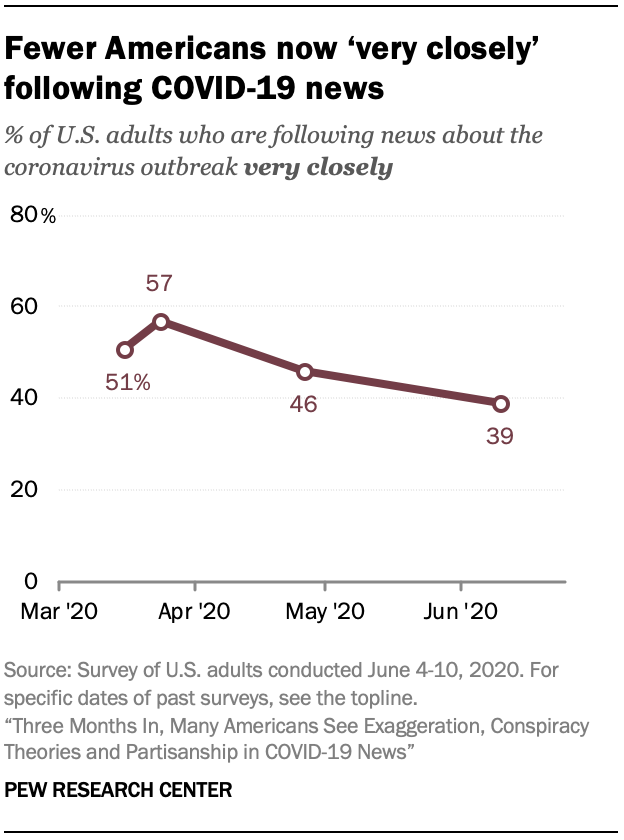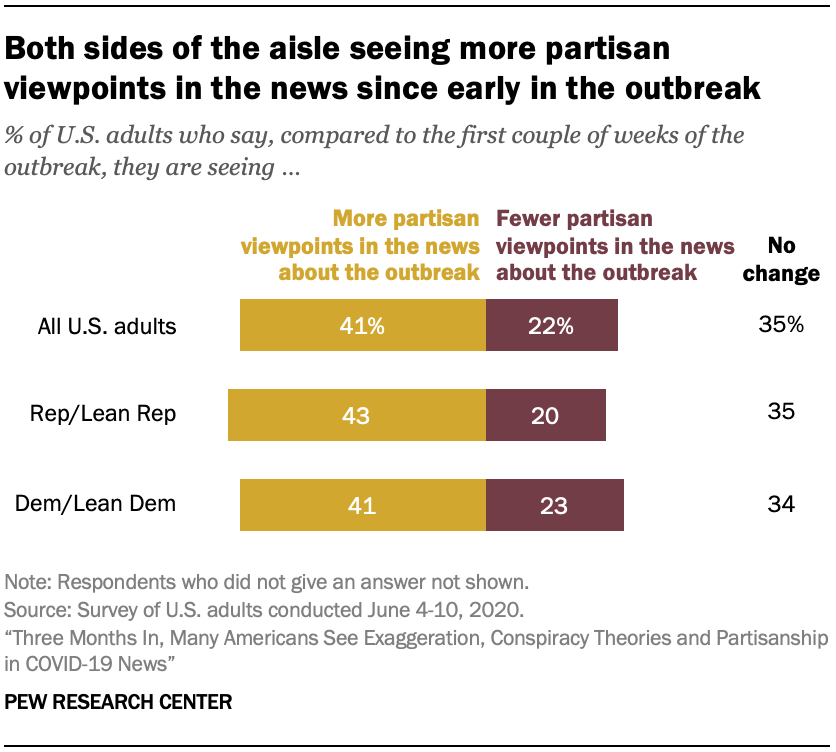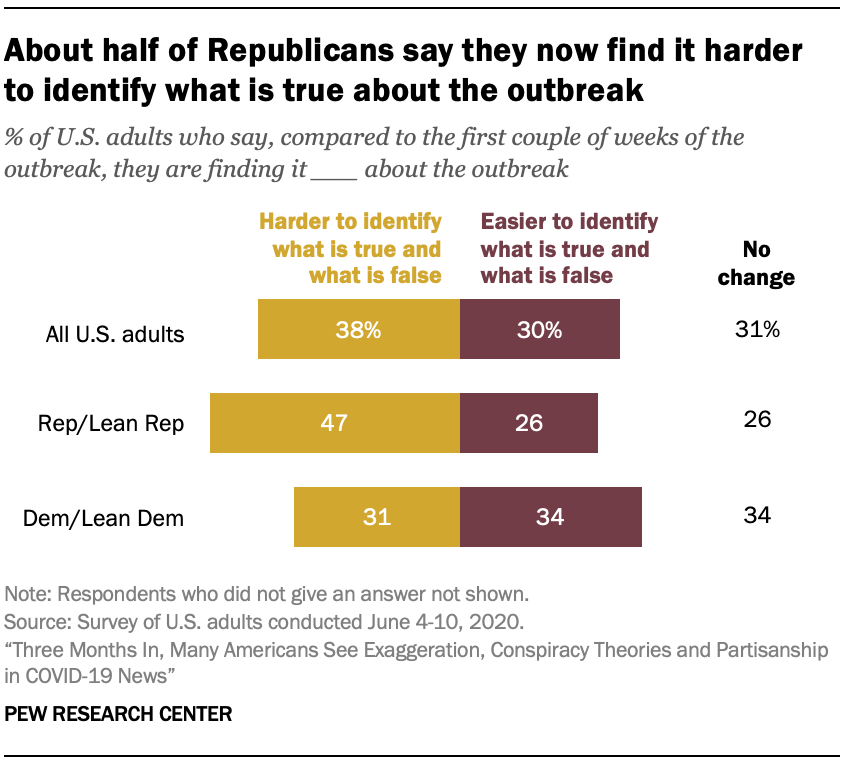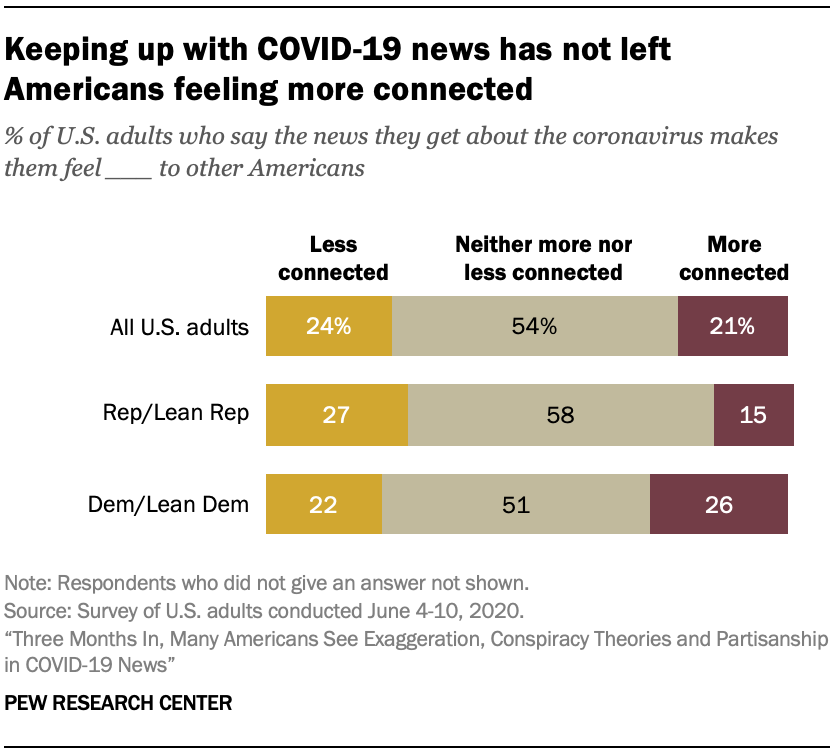
A large majority of Americans (86%) surveyed from June 4-10 say they are following news about the COVID-19 outbreak “very” or “fairly” closely. That portion is close to the share who said the same in March and April, when between 87% and 92% were following the outbreak very or fairly closely.
But the June survey, which took place as demonstrations following the killing of George Floyd were dominating headlines, shows a decrease in those paying very close attention to the COVID-19 outbreak. The 39% of U.S. adults reporting this highest level of engagement is down from 46% in late April and 57% in late March, when the outbreak was first forcing shutdowns around the country.
While Americans on both sides of the political aisle are about equally likely to be keeping up with coronavirus news at least fairly closely, Democrats and those who lean Democratic are somewhat more likely than Republicans and GOP leaners to be following it very closely (44% vs. 35%). The partisan gap on this question has widened slightly since March and April.
Americans say they are seeing more partisan views in coronavirus coverage, with a plurality becoming less certain about what is true

In following coronavirus news over the last several months, Americans sense that the news that they see has become more political – and, in some cases, that it has become harder to determine what is true and false.
Overall, about four-in-ten U.S. adults (41%) say they are now seeing more partisan viewpoints in the news about the outbreak compared with the first couple of weeks of the outbreak in the U.S. That is about twice the share who say they are seeing less partisanship in coronavirus coverage (22%). Roughly a third (35%) say they have not noticed a change in this area.
In a rare instance of bipartisan agreement, Democrats and Republicans offer similar responses on this question, with about four-in-ten in each group saying they have seen a rise in partisan viewpoints in coronavirus news.
Americans who rely most on local news outlets for COVID-19 news are less likely than others to say they have seen a rise in partisanship (28%) and more likely to have seen no change (42%).

Along with the perceived rise in partisan views in coronavirus coverage, a plurality of Americans (38%) say that, compared with the first few weeks of the outbreak, it has become harder to identify what is true and false about the COVID-19 outbreak. That group is modestly larger than the 30% who say it has become easier over time, while a similar share (31%) say there has been no change in their ability to discern truth from falsehoods.
Republicans are more likely than Democrats to say it has become harder to figure out what is true. Nearly half of all Republicans (47%) say they now find it harder to identify what is true and false about the outbreak – substantially exceeding the 26% who say it has become easier. In contrast, about a third of Democrats (31%) say that it has become harder to determine what is true about COVID-19, roughly on par with the 34% who say it has become easier.
Those who rely mainly on Trump and his task force for COVID-19 news are especially likely to say it has become harder to tell what is true and what is false, at 49%. Among those who rely most on the national media for COVID-19 news, meanwhile, fewer (30%) say it has become harder to tell fact from fiction.
Following coronavirus news has not made Americans feel more connected to each other

The survey also asked respondents whether the news they are getting about the coronavirus makes them feel more connected or less connected to other Americans (or makes no difference either way). Just over half of those surveyed (54%) say it hasn’t affected their feelings of interconnectedness, while the remainder are about equally likely to say COVID-19 coverage makes them feel more connected (21%) or less connected (24%) to others.
Democrats are somewhat more likely than Republicans to say coronavirus news is giving them a feeling of connection to other Americans (26% vs. 15%), but this is still a minority view among Democrats.